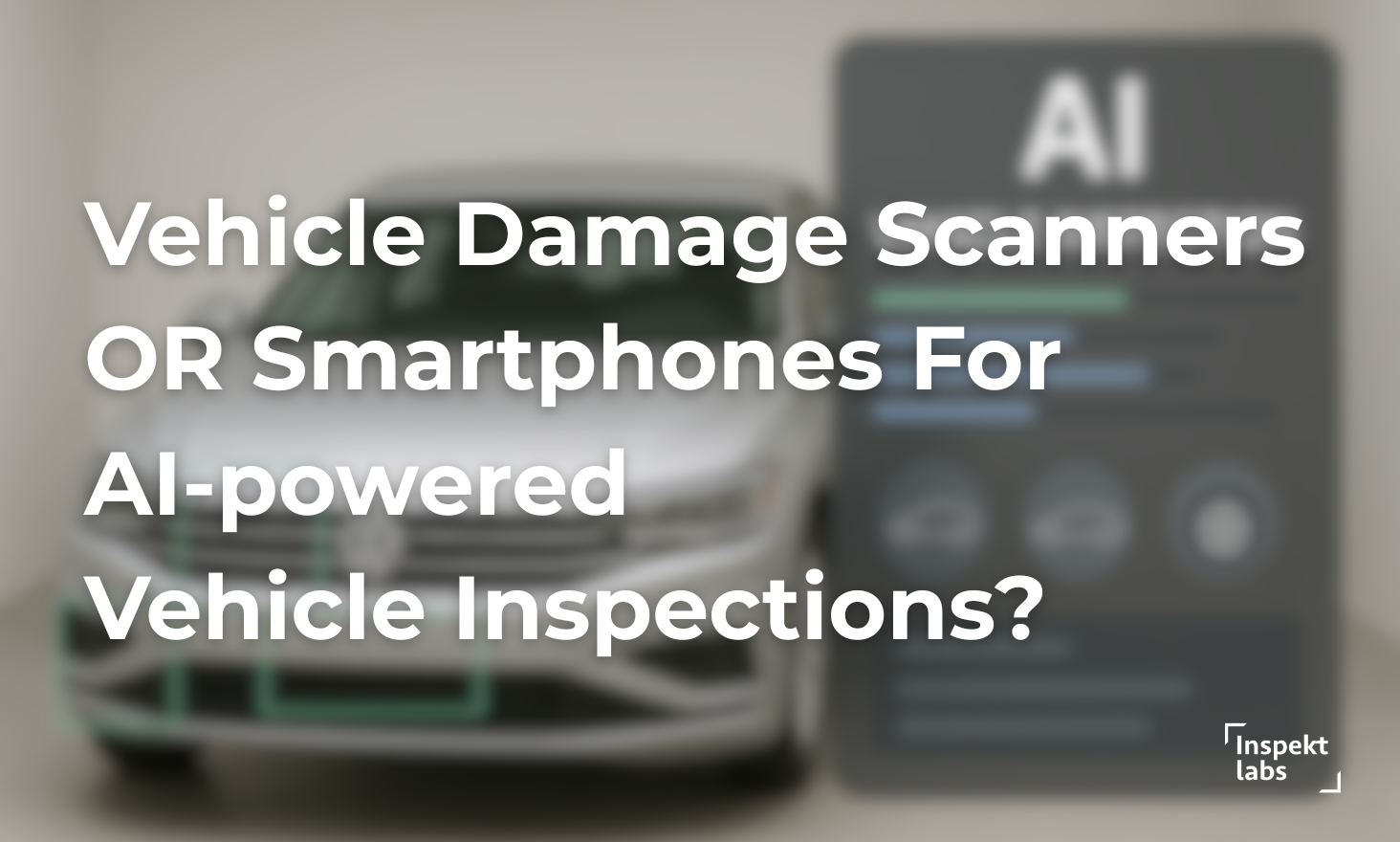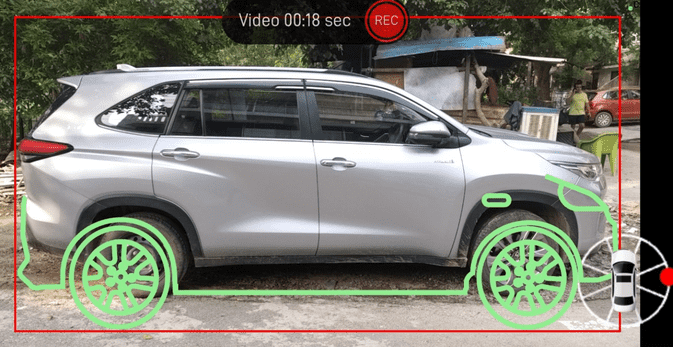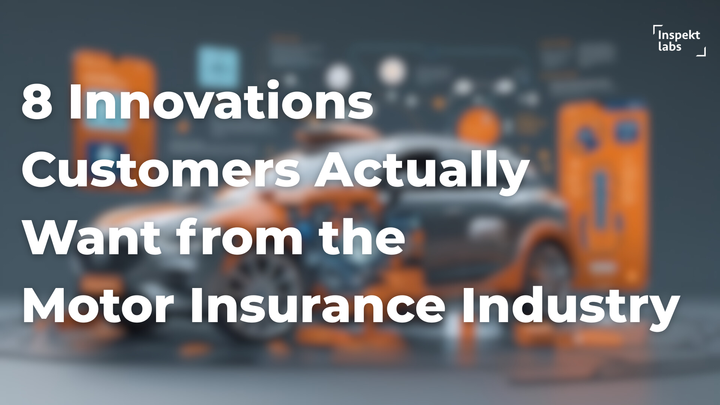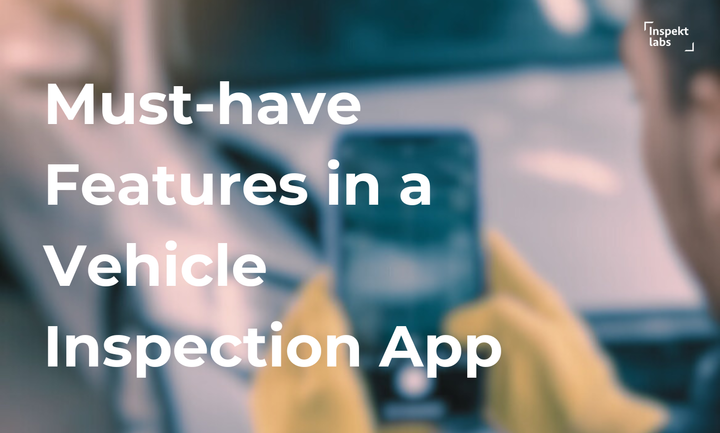Picking the Best AI Vehicle Inspection solution : Vehicle Damage Scanners or Smartphones?
AI-powered vehicle inspections can either be run using a fixed setup or through a smartphone. However, which one fits your use-case better? Let's find out.

In today's automotive ecosystem, AI vehicle inspections have become an important tool for ensuring transparency, safety, and efficiency. Whether it's validating insurance claims, assessing rental cars during pickup and return, or managing fleet operations, accurate vehicle inspections form the foundation of trust and control.
Two leading technologies have emerged in this domain:
- Vehicle damage scanners, and
- Smartphone-based inspections
Both leverage the power of AI to detect issues and generate a comprehensive vehicle condition report, but they differ significantly in cost, setup, and scalability.
This blog explores how these two approaches work, their advantages and limitations, and how businesses can choose the right automated vehicle inspection system for their needs.
What are Vehicle Damage scanners? And how do they work?

Vehicle damage scanners are automated systems that capture high-resolution images of vehicles as they pass through a designated scanning area. These scanners use highly sophisticated algorithms to identify external damage such as dents, cracks, or scratches.
Here's how they function:
- A vehicle drives through the scanner that is equipped with multiple cameras.
- The system instantly captures multiple images from various angles.
- The automated vehicle inspection system processes the images using deep learning models to identify and categorize visible damage.
- The AI then compiles the findings into a comprehensive vehicle condition report, outlining the type, location, and severity of each detected damage.
This technology offers high throughput and consistency, making it an ideal fit for rental depots, fleet yards, and auction houses that inspect hundreds of vehicles daily. Moreover, when integrated with a vehicle inspection app, results can be accessed and verified remotely within seconds.
What are smartphone-based inspections? And how do they work?

Smartphone-based inspections bring flexibility and accessibility to the inspection process. Instead of relying on physical infrastructure, they use an app to guide users through capturing images or videos of the vehicle.
Here's how it works:
- A user (such as an inspector, customer, or driver) follows directions on a vehicle inspection app to document key areas of the vehicle.
- These images/videos are uploaded to an automated vehicle inspection system, which uses AI to analyze each frame.
- The system detects damage, identifying scratches, dents, or glass cracks, and then generates a detailed vehicle condition report.
This model allows insurers, rental companies, and dealerships to perform remote inspections at scale. The combination of AI vehicle inspection and mobile accessibility significantly reduces operational costs and inspection times.
Comparison: Vehicle Damage Scanners vs Smartphone-based inspections
Both methods leverage AI to deliver faster and more reliable assessments than traditional manual methods.
Industry use cases
Rental companies

Rental operators rely heavily on AI vehicle inspections to automate check-in and check-out processes. Vehicle damage scanners ensure consistency in busy locations (like airports) with hundreds of daily transactions. For off-site or remote returns, smartphone-based inspections powered by a vehicle inspection app provide flexible, on-the-go car damage detection.
Fleet Management

Fleet management teams benefit from a hybrid approach. Central hubs can install vehicle damage scanners to handle bulk inspections, while field drivers use smartphone-based inspections for quick updates. The collected data is unified through an automated vehicle inspection system, ensuring standardized records and real-time visibility into vehicle health. Each inspection generates a detailed vehicle condition report, which helps in improving maintenance planning and cost control.
Used car dealerships & auctions
Used car businesses often depend on objective car damage detection to assess resale value and build buyer trust. Vehicle damage scanners provide detailed, automated reports that highlight every visible imperfection, forming a foundation of a comprehensive vehicle condition report. Smaller dealerships can use vehicle inspection apps for quicker, budget-friendly evaluations powered by smart algorithms.
Insurance & Claims
In the insurance sector, AI vehicle inspections accelerate claim settlements and minimize fraud. Policyholders can use smartphone-based inspections to capture images of their damaged cars. The AI model analyzes these visuals for car damage detection, ensuring claim accuracy. The resulting vehicle condition report becomes a transparent record for both insurers and customers.
Choosing the right solution
Selecting between vehicle damage scanners and smartphone-based inspections depends on your operational setup and business goals. Consider these factors:
- Vehicle volume per day: High-volume inspection centers should invest in vehicle damage scanners for efficiency. For moderate or low volumes, smartphone-based inspections provide more flexibility.
- Number of inspection sites: Centralized hubs benefit from scanners, while decentralized networks can easily scale using a vehicle inspection app and a cloud-based automated vehicle inspection system.
- Budget (CapEx vs OpEx): Vehicle damage scanners require upfront investment, but their long-term per-inspection cost is low. Smartphone-based setups operate on a subscription/per-inspection model with minimal CapEx.
- Workforce & Training capacity: Smartphone-based inspections are intuitive and require minimal training, whereas vehicle damage scanners may need some technical oversight.
- Integration with existing systems: Both can integrate with existing fleet or insurance software, but smartphone-based vehicle inspection tools offer faster API integrations and deployment flexibility.
Conclusion
Both vehicle damage scanners and smartphone-based inspections have revolutionized how businesses approach AI vehicle inspections.
For organizations dealing with high inspection volumes and centralized operations, vehicle damage scanners deliver unmatched precision, speed, and automation. On the other hand, smartphone-based inspections offer scalability and affordability, which is perfect for field operations, smaller fleets, and insurance workflows.
No matter which approach you choose, the outcome remains the same: faster, more accurate, and data-driven inspections backed by car damage detection and detailed vehicle condition reports. These technologies mark a new era in the automotive industry, where AI ensures that every vehicle inspection is efficient, transparent, and trustworthy.
Still confused about which would be the best product for your use-case? Get in touch with us today for a detailed breakdown.



